The Ultimate Guide to Nappy Liners4 September 2023 Reusable nappies have become really popular in recent years and with clever new designs they are much simpler to use. Whether you go for pocket nappies or fitted bamboo nappies with wraps, the choice to use cloth nappy liners or not can be confusing. One of the main hurdles for people considering and rejecting cloth nappies is poo and how to avoid dealing with it. Nappy liners can help with this and make removing poo from your baby's bottom an easier task. Here at Cheeky we've been all about 'Simple Reusables' since we launched our bestselling reusable wipes kit back in 2008. I used cloth nappies with all three of my children and was a bit of a cloth nappy addict too! So I thought it would be helpful to try and clear some of the confusion with this 'Ultimate Guide to Nappy Liners' answering: Nappy liners are an extra layer of non absorbent material placed directly next to babies skin. They help to catch solid poo and make cleaning up easier in reusable cloth nappies. They are used to protect the nappy and certain types can be used as a stay dry layer for babies skin. Liners are useful if baby needs nappy barrier creams or treatments for nappy rash. These rash creams should be kept off your cloth nappies to avoid impacting the absorbency. Nappy liners are optional. Nappy liners come in two different types, disposable or reusable. Disposable liners are a paper or cellulose layer that is primarily used to catch poo. Disposable liners don't keep babies skin dry and even if they are described as flushable they can block pipes, drains and sewers. They should be disposed of in a bin after dropping solids into the toilet. If they are biodegradable be sure to follow instructions to make sure they will degrade. They can be composted if they are only wet. They are relatively cheap and come in a long roll with perforations between sheets. They can be uncomfortable for baby as they crumple easily. 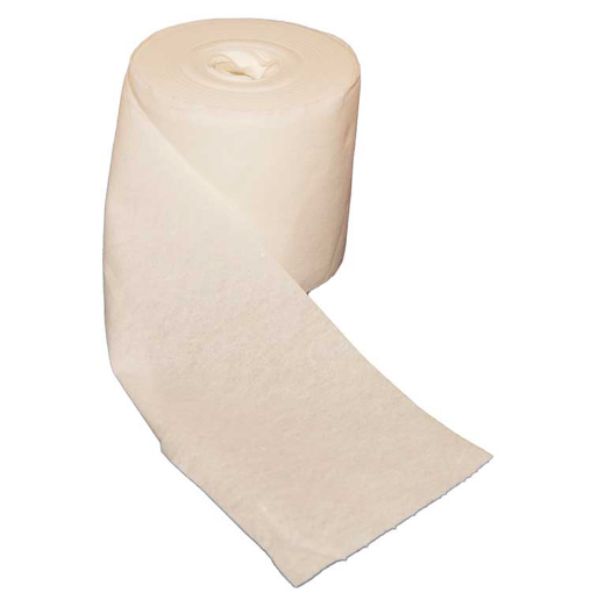
Disposable liners can also often made from bamboo. Bamboo nappy liners are thick, like heavy paper and usually come on a roll so can be torn to use. Disposable liners are a single use product and should not be reused. Bamboo liners will help catch solid poo. As they are thin they are best used when a baby has weaned and has more solid poo. Pre-weaning poo is water soluble and can go straight in the washing machine. "Amazing quality, great fit, soft on skin, not bulky with excellent absorption. The best nappies I have tried (and I have tried a few!) and there is no way I am using anything else from now on." Product Review Reusable nappy liners are made of polyester or micro fleece and are cheap to buy. As they will last the lifetime of your children's nappy days they are the most cost effective liners to buy. It is easy to make your own from a thin fleece blanket. 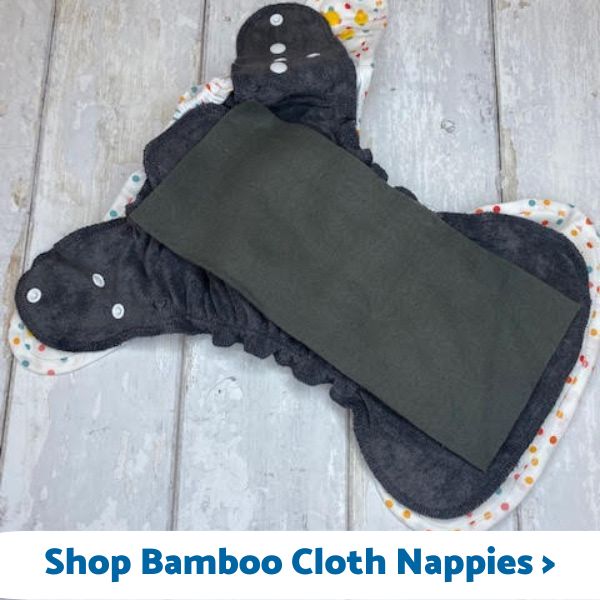
Fleece allows fluids through under pressure and won't allow moisture back as it is not absorbent. Most modern cloth nappy companies use recycled fleece to offset the micro plastic element. Babies will stay drier with a fleece reusable liner than with a disposable liner. Silk can also be used as a stay dry layer in cloth nappies. It is the best liner to use if baby has sensitive skin or is prone to rashes. It has natural antibacterial properties. It is the most expensive type of liner and needs to be hand washed. "Quality soft nappies and an ingenious wipes kit. Exactly what I needed for my twin girls and to alleviate my conscience from the guilt of throw away baby products. Friendly and helpful customer service. Will recommend to friends!" Josephine, Trustpilot To use nappy liners, lay them inside your cloth nappy next to babies skin. Close and fasten the cloth nappy as usual making sure that the edge of the liners doesn't poke out the sides of the nappy. Once you change your baby, you need to deal with the soiled liners. This differs between disposable and reusable liners and how solid or liquid your baby's poo is. New borns diet is liquid so their bowel movements tends to be very loose and runny too. If baby has an explosion sometimes the liner won't catch all the poo. The nappy and wrap should contain the excess. Remember, disposable nappies struggle to contain new born poonamis, poop bursting up to the neck of a baby gro happens! But less in cloth. 
Disposable liners - pinch together and carry to the toilet, drop any solids in and flush, dispose of the liner in a bin. If only wet, recycle or compost if biodegradable. 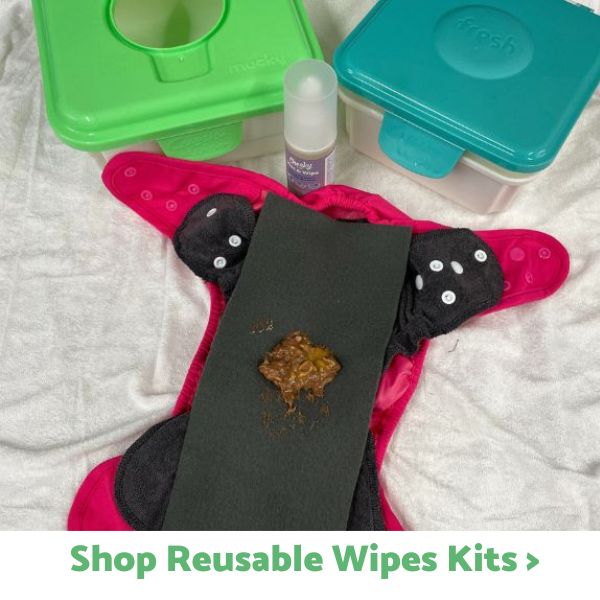
Reusable liners - pinch together and carry to the toilet, drop any solids in and sluice any residue in the flush, drop into your nappy bin or wetbag with the used reusable diaper ready for washing. Reusable nappy liners need to be rinsed or sluiced before washing. It is definitely no fun if your little one has loose poo but it is all part of the cloth journey. To sluice reusable nappy liners, hold the least soiled part of the liner gripped in your hand then flush the toilet dangling your fleece liner in the stream of clean water and bounce it up and down. The pressure of the water will dislodge any stubborn poo. 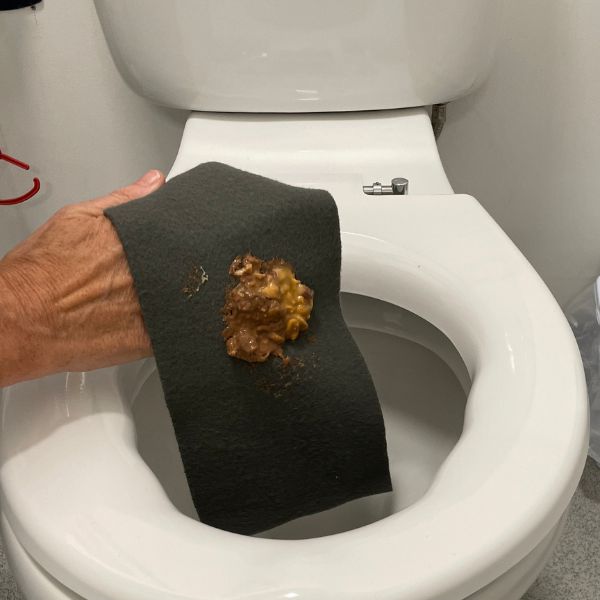
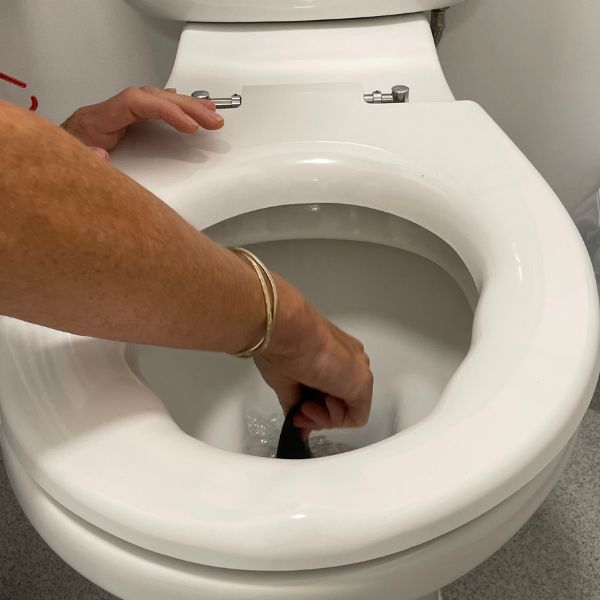
Before weaning, you can skip the sluice and just wash pooey nappies in the machine as they are water soluble. Make sure you do a rinse cycle to remove most of the soiling before the main wash - sometimes known as poo soup rinse. If you dislike the idea of poo in your washing machine, sluice or stick to thicker paper liners until your baby is weaned. 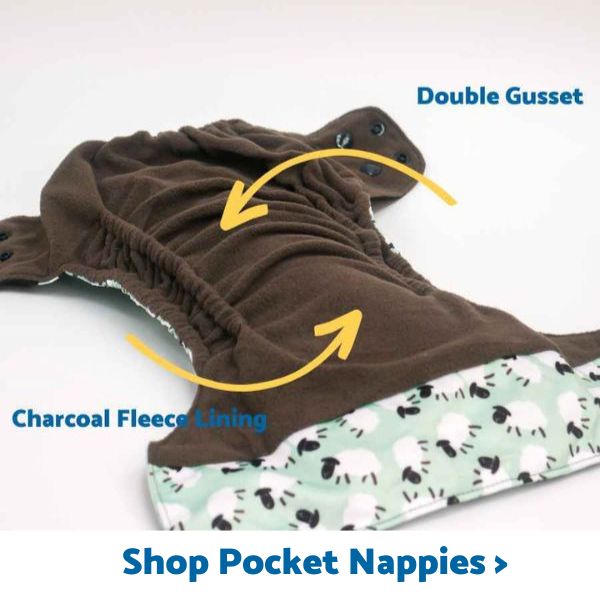
No, you don't need to use a nappy liner if your reusable nappies have a stay dry fleece top layer. Solid poo will drop off the fleece top layer and any excess can be sluiced in the flush. Our Cheeky pocket nappies don't need additional liners, however our 2 part bamboo nappies do. Some families keep a special spoon next to the toilet for scraping. Liners are good for ease of poo removal in non lined nappies. No, nappy liners are not flushable unless you want to run the risk of blocked sewers. Many nappy liners claim to be flushable, however biodegradable nappy liners breakdown more slowly than toilet paper. They are not good for the pipes and drains on your property or in the general sewers. Even if they say they are flushable they can add to fatbergs clogging our underground networks and waterways. If the liner is just wet with NO soiling they can go on your compost heap or in your paper recycling. Local authorities do not permit human waste in the kitchen bin so try to remove as much poo from disposable liners as possible before throwing away. If this blog was useful you may find these useful - Beginners guide to reusable nappies How many reusable nappies do I need? Sanitising cloth nappies Do cloth nappies restrict movement? If you would like more help, please drop the team a line or use the website chat function. We all use the products ourselves and just LOVE to chat pee poo and periods, all day long. Nothing is TMI and we all love to overshare based on our own experiences. About the Author: Kirstin works in the Customer Experience team at Cheeky Wipes, which since 2008 has been selling the original reusable wipes kit. She is mum to three and loves walking in the forest and swimming year round in the sea! Cheeky wipes were recognised with a Queens Award for Enterprise in Sustainable Development in 2021, celebrating their hard work over the last 13 years. |